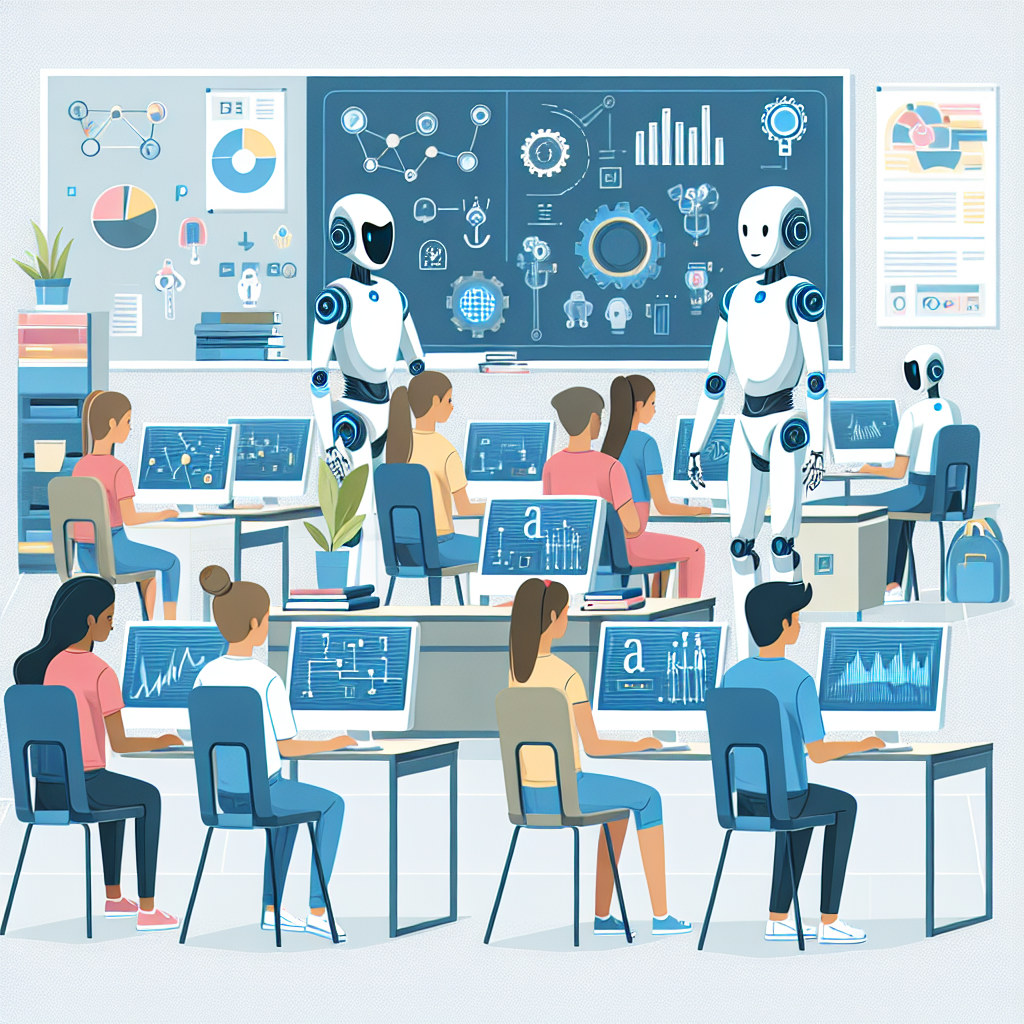In recent years, artificial intelligence (AI) has made significant advancements in various fields, including education. AI tools in education have the potential to revolutionize the way students learn, by providing personalized learning experiences tailored to individual needs and abilities. By leveraging AI technology, educators can create adaptive learning environments that cater to each student’s unique learning style, pace, and preferences. In this article, we will explore the benefits of implementing AI tools in education for personalized learning, and how they can enhance the overall learning experience for students.
One of the key advantages of AI tools in education is their ability to provide personalized learning experiences. Traditional classroom settings often follow a one-size-fits-all approach, where all students are taught the same material at the same pace. This can be challenging for students with different learning styles, as they may struggle to grasp certain concepts or feel bored by material that is too easy for them. AI tools can address this issue by adapting the learning content to suit each student’s individual needs and abilities. For example, AI-powered learning platforms can analyze a student’s performance on quizzes and assignments, and provide recommendations for additional resources or practice exercises based on their strengths and weaknesses.
Furthermore, AI tools can also track a student’s progress over time and provide real-time feedback to help them improve their performance. This can help students stay engaged and motivated, as they receive immediate feedback on their work and can see their progress over time. By providing personalized feedback and recommendations, AI tools can help students identify areas for improvement and focus on areas where they need additional support.
Another benefit of implementing AI tools in education is their ability to enhance student engagement and motivation. AI-powered learning platforms can incorporate interactive elements, such as gamification and virtual reality, to make learning more engaging and enjoyable for students. By integrating these elements into the learning experience, educators can create a more immersive and interactive environment that encourages students to actively participate in their learning. This can help students stay focused and motivated, as they are more likely to be engaged with the material when it is presented in a fun and interactive way.
Additionally, AI tools can also help educators streamline their teaching process and save time on administrative tasks. For example, AI-powered grading tools can automate the process of grading assignments and quizzes, freeing up educators to focus on providing personalized feedback to students. This can help educators be more efficient in their teaching and provide more individualized support to students. By automating routine tasks, AI tools can help educators save time and focus on what really matters – helping students learn and succeed.
Despite the numerous benefits of implementing AI tools in education, there are also some challenges and concerns that need to be addressed. One of the main concerns is the potential for bias in AI algorithms, which can lead to unfair treatment or discrimination against certain groups of students. To mitigate this risk, it is important for educators to be aware of bias in AI algorithms and take steps to ensure that they are fair and unbiased. This includes regularly monitoring and evaluating the performance of AI tools, and making adjustments as needed to address any biases that may arise.
Another challenge is the need for educators to be trained in using AI tools effectively in the classroom. While AI technology has the potential to enhance the learning experience for students, educators need to be equipped with the knowledge and skills to effectively integrate AI tools into their teaching practice. This includes training on how to use AI-powered learning platforms, interpret the data generated by AI algorithms, and provide personalized support to students based on their individual needs and abilities.
In conclusion, implementing AI tools in education for personalized learning has the potential to revolutionize the way students learn and engage with the material. By leveraging AI technology, educators can create adaptive learning environments that cater to each student’s unique needs and abilities, providing personalized feedback and recommendations to help them improve their performance. While there are challenges and concerns that need to be addressed, the benefits of implementing AI tools in education far outweigh the risks. With proper training and support, educators can harness the power of AI technology to enhance the learning experience for students and help them succeed in their academic endeavors.
FAQs:
Q: How can AI tools be used to provide personalized learning experiences for students?
A: AI tools can analyze a student’s performance on quizzes and assignments, and provide recommendations for additional resources or practice exercises based on their strengths and weaknesses. By adapting the learning content to suit each student’s individual needs and abilities, AI tools can provide personalized learning experiences tailored to each student’s unique learning style, pace, and preferences.
Q: What are some of the benefits of implementing AI tools in education for personalized learning?
A: Some of the benefits of implementing AI tools in education for personalized learning include enhanced student engagement and motivation, improved learning outcomes, and increased efficiency for educators. By providing personalized feedback and recommendations, AI tools can help students stay engaged and motivated, identify areas for improvement, and focus on areas where they need additional support.
Q: What are some of the challenges and concerns associated with implementing AI tools in education?
A: Some of the challenges and concerns associated with implementing AI tools in education include the potential for bias in AI algorithms, the need for educators to be trained in using AI tools effectively, and the risk of relying too heavily on technology at the expense of human interaction. It is important for educators to be aware of these challenges and take steps to address them in order to ensure that AI tools are used effectively in the classroom.

